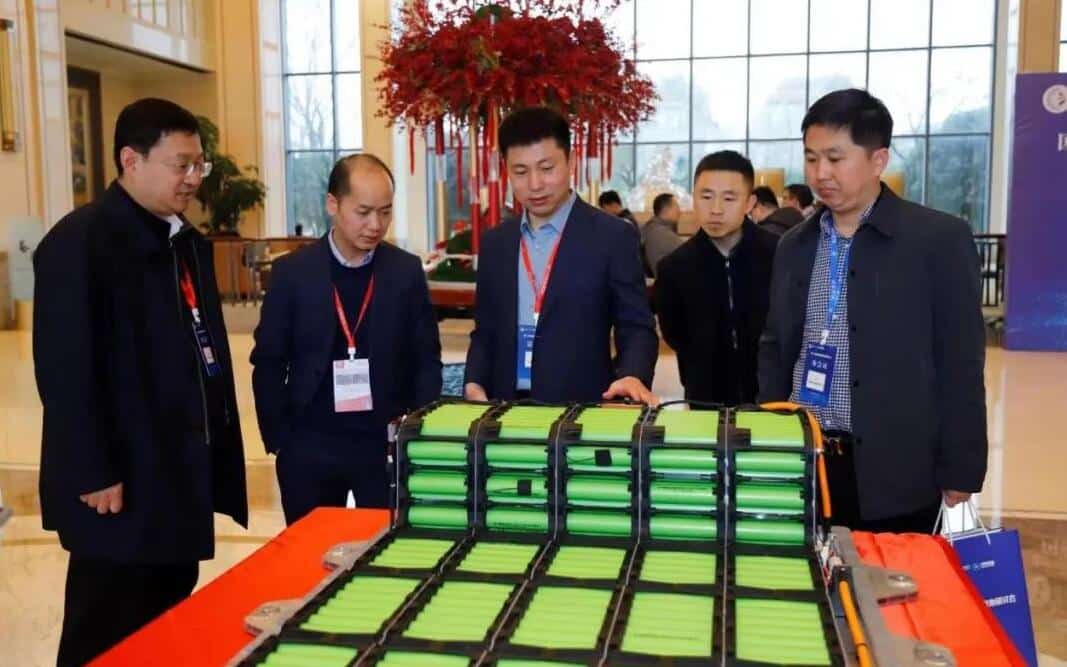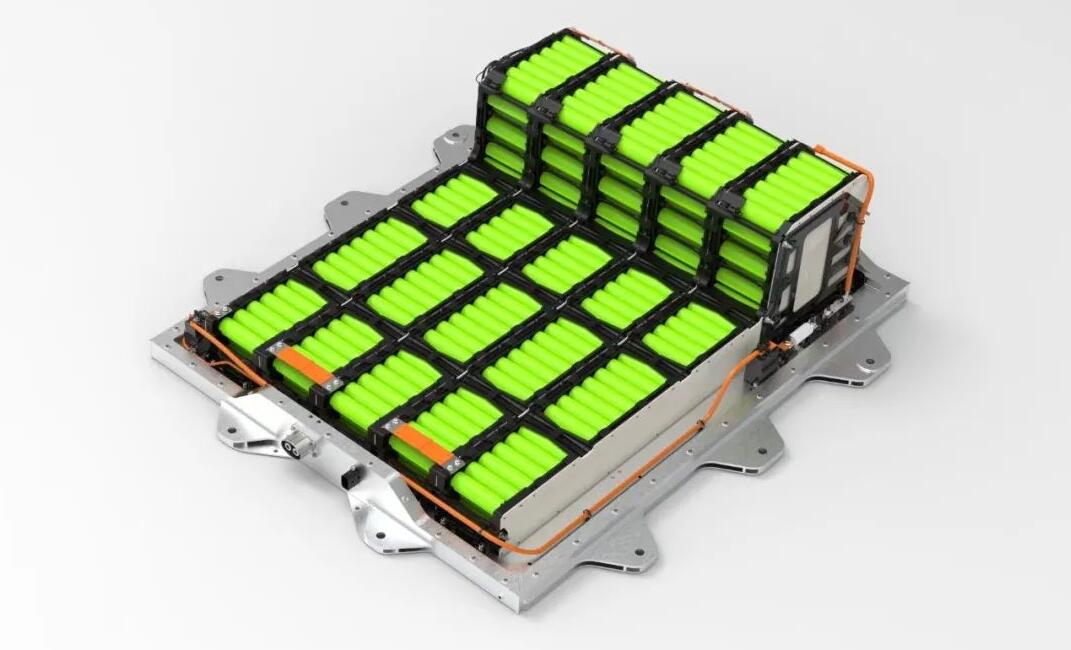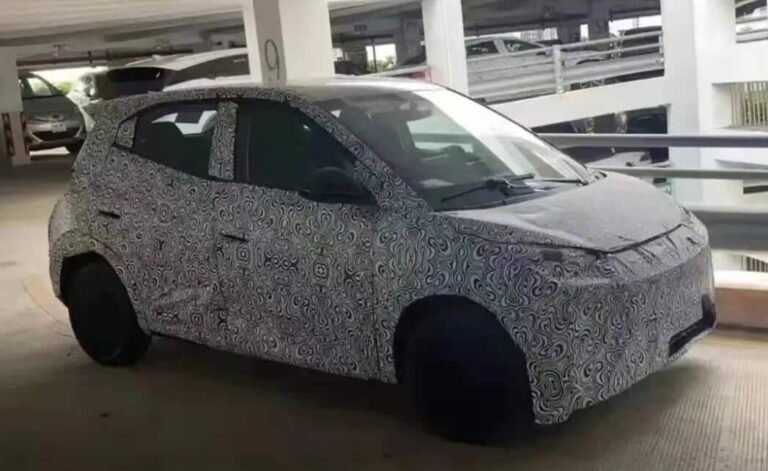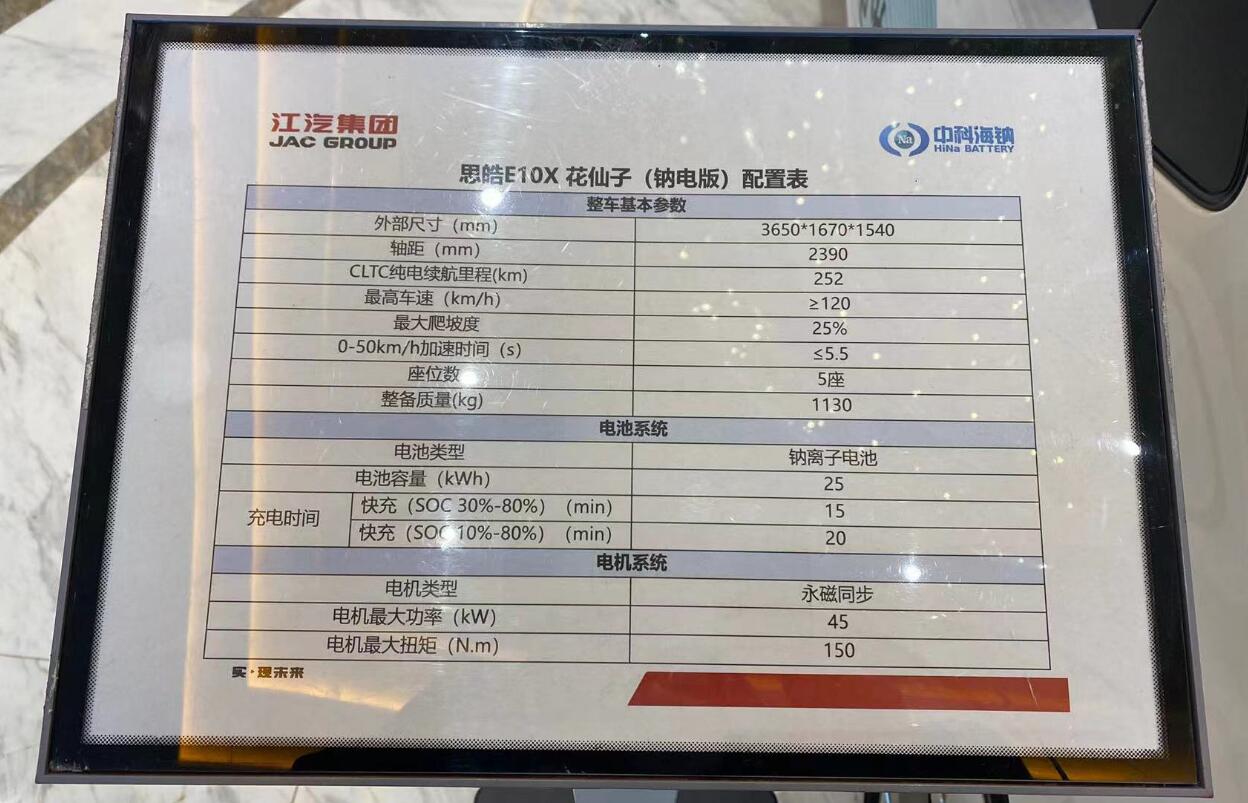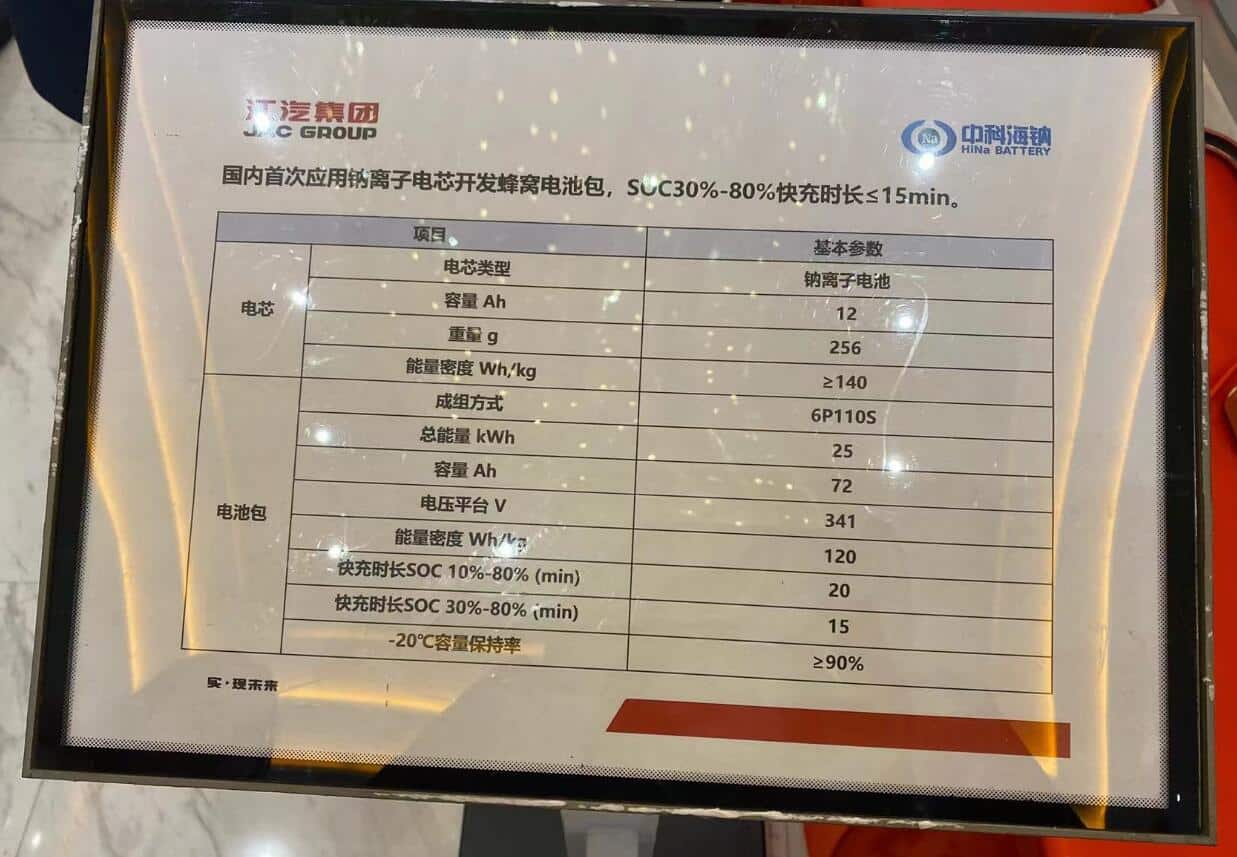Correction: The name of the model was corrected to E10X, which was previously incorrectly written as EX10.
The unveiling of the Sehol E10X test vehicle means that sodium-ion batteries are starting to be used in passenger cars, after the new batteries were mainly used in electric two-wheelers and for energy storage.
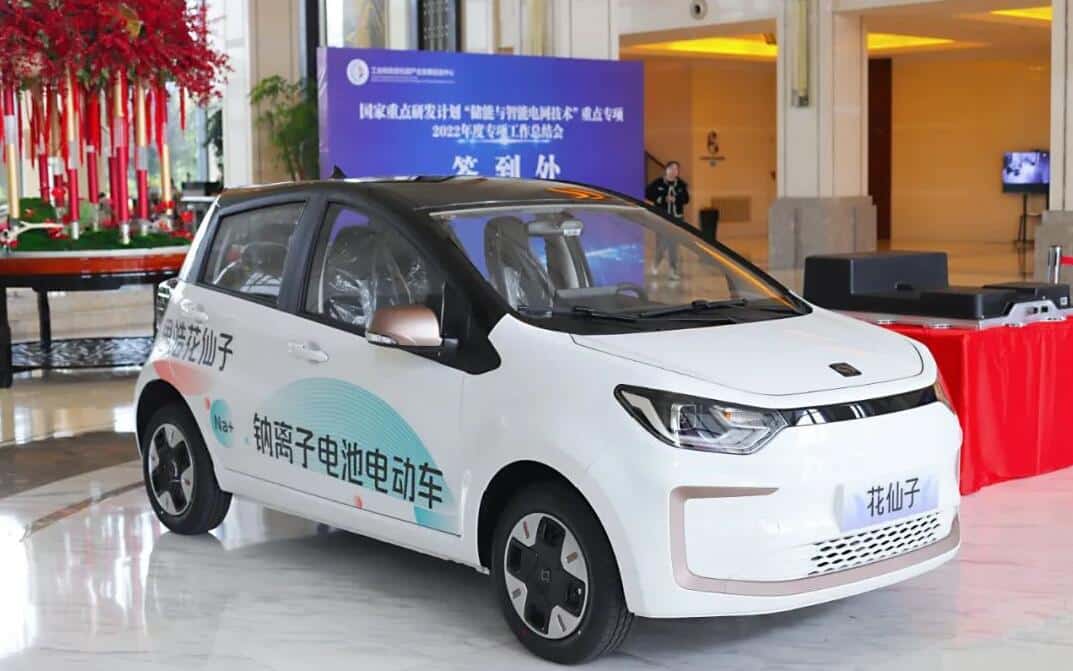
(Image credit: Sehol)
An unknown Chinese power battery maker has begun putting sodium-ion batteries in passenger cars, potentially marking the beginning of a big change in the battery industry and in the market for affordable passenger electric vehicles (EVs).
Battery maker Hina Battery today unveiled three sodium-ion battery cell products and announced a partnership with Anhui Jianghuai Automobile Group Corp (JAC), which has made one of its models the first to carry sodium-ion batteries.
Hina Battery and Sehol -- a joint venture brand between JAC and Volkswagen Anhui -- have jointly built a test vehicle with sodium-ion batteries based on the latter's Sehol E10X model.
The test vehicle has a battery pack with a capacity of 25 kWh and an energy density of 120 Wh/kg. The model has a range of 252 km and supports fast charging of 3C to 4C. The battery pack uses cells with an energy density of 140 Wh/kg.
For comparison, the regular version of the Sehol E10X has two pack capacities, 19.7 kWh and 31.4 kWh, with a range of 200 km and 302 km, respectively. The higher capacity pack has an energy density of 141 Wh/kg.
The Sehol E10X is currently available in seven versions with a guide price range of RMB 46,900 ($6,810) to RMB 76,400.
"We judge that the application of sodium-ion batteries in the new energy vehicle market will start with the A00-class EVs, which is why we chose a model like the Sehol E10X for our installation trials," a post on Sehol's official WeChat account today quoted an executive from the company as saying.
The sodium-ion battery technology and performance could be used in mid- to large-sized EVs as it matures further, the executive said.
The partnership with Hina Battery is a significant exploration, and Sehol will continue to monitor the application of sodium-ion batteries in the future and launch related products at the right time, the executive said.
The unveiling of the test vehicle means that sodium-ion batteries are starting to be used in passenger cars, after the new batteries were mainly used in electric two-wheelers and energy storage.
On July 29, 2021, CATL unveiled its first-generation sodium-ion battery, claiming that the single-unit energy density had reached 160 Wh/kg, the highest level in the world.
Overall, the energy density of the first-generation sodium ion battery is slightly lower than that of the current lithium iron phosphate battery. But it has clear advantages in low-temperature performance and fast charging, especially in high-power application scenarios in alpine regions, the company said at the time.
Analysts believe sodium-ion batteries have an energy density between lithium-ion and lead-acid batteries but have a lower cost than lithium-ion batteries.
Sodium-ion batteries are suitable for areas that do not require high energy density but are cost-sensitive, and will mainly be used in energy storage and in two-wheeled vehicles, Guosen Securities analyst Tang Xuxia's team said in a research note in July 2021.
On November 22 last year, local media outlet LatePost reported that BYD plans to mass produce sodium-ion batteries in the second quarter of 2023, and they will be featured in the Qin EV, Dolphin and the new model all-electric minicar Seagull.
After the report was published, BYD responded by saying the news was untrue but provided no further details.
In a November 30 report, Yiche cited a conference call that said BYD's Seagull will likely be the first to carry sodium-ion batteries, with the model's launch expected in the second quarter of 2023.
The BYD Seagull will be offered in both sodium-ion and lithium-ion battery versions, with the former expected to be priced as low as RMB 60,000 and the latter expected to be RMB 80,000, Yiche's report said.
In addition to the announcement of the sodium-ion battery-equipped test vehicle, Hina Battery today officially launched three sodium-ion battery cells.
These three types of cells are NaCR32140-ME12 cylindrical cell, NaCP50160118-ME80 square cell and NaCP73174207-ME240 square cell, with energy densities of 140 Wh/kg, 145 Wh/kg and 155 Wh/kg respectively.
According to Li Shujun, general manager of Hina Battery, the company's sodium-ion batteries are geared to mainstream market demand and have the advantages of long life, wide temperature range and high power, and are ready for mass production.
The company is advancing cooperation with a number of leading companies, and these sodium-ion battery products will be widely used in two-wheelers, passenger cars, commercial vehicles, home and commercial and industrial energy storage, and large-scale energy storage, he said.
Hina Battery was founded in 2017 and released its sodium-ion battery in the same year.
On December 18, 2021, Hina Battery entered into a partnership with two subsidiaries of China Three Gorges Corporation (CTG) and the Fuyang municipal government in Anhui to jointly build the world's first large-scale mass production line for sodium-ion batteries.
On December 1, 2022, Hina Battery announced that the world's first GWh-class sodium-ion battery production line saw its first product roll out.
(1 $= 6.8865 RMB)
(Specifications of the Sehol E10X with sodium-ion battery.)
(Specifications of the sodium-ion battery cell and pack that Sehol E10X is equipped with.)

